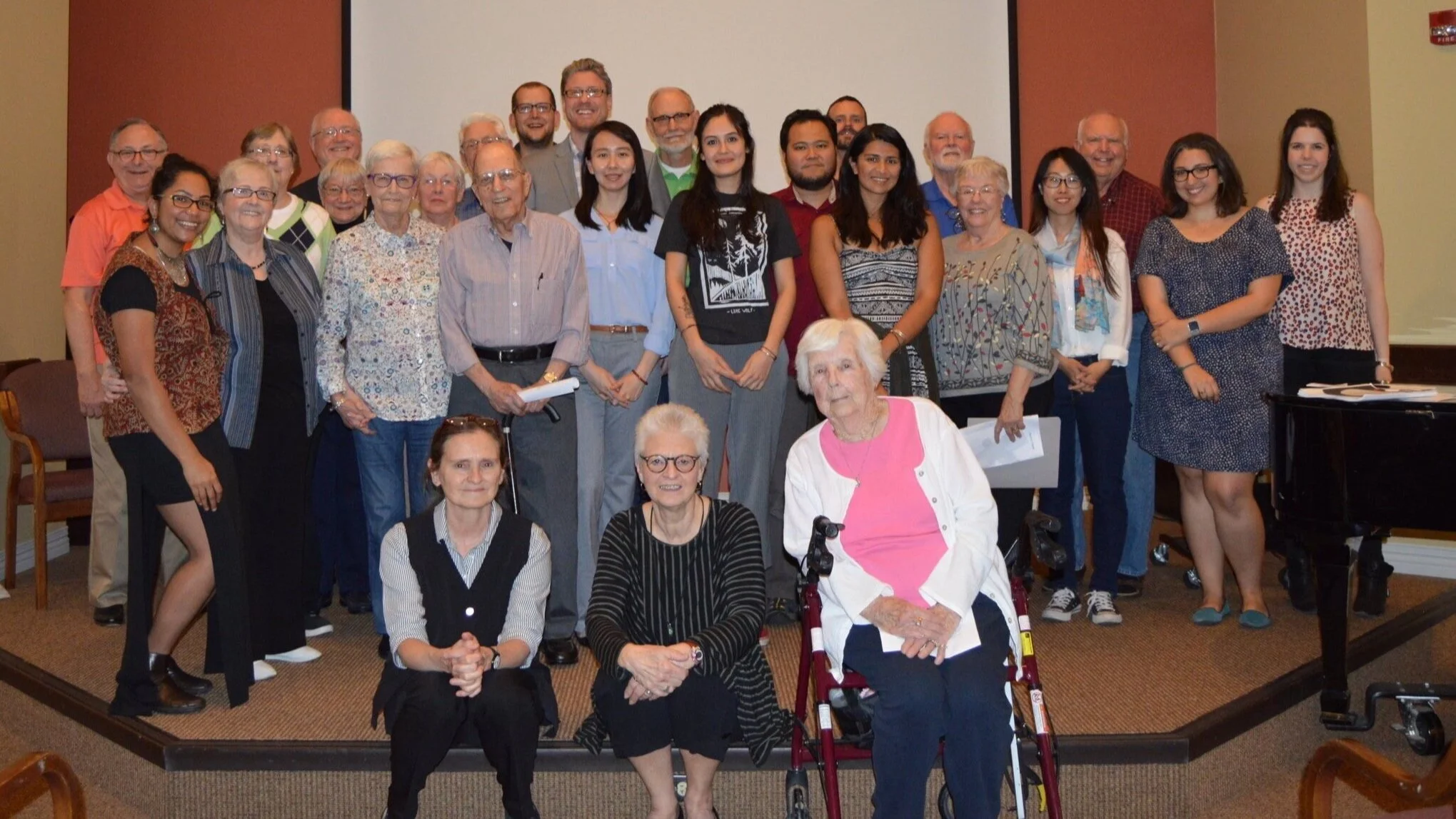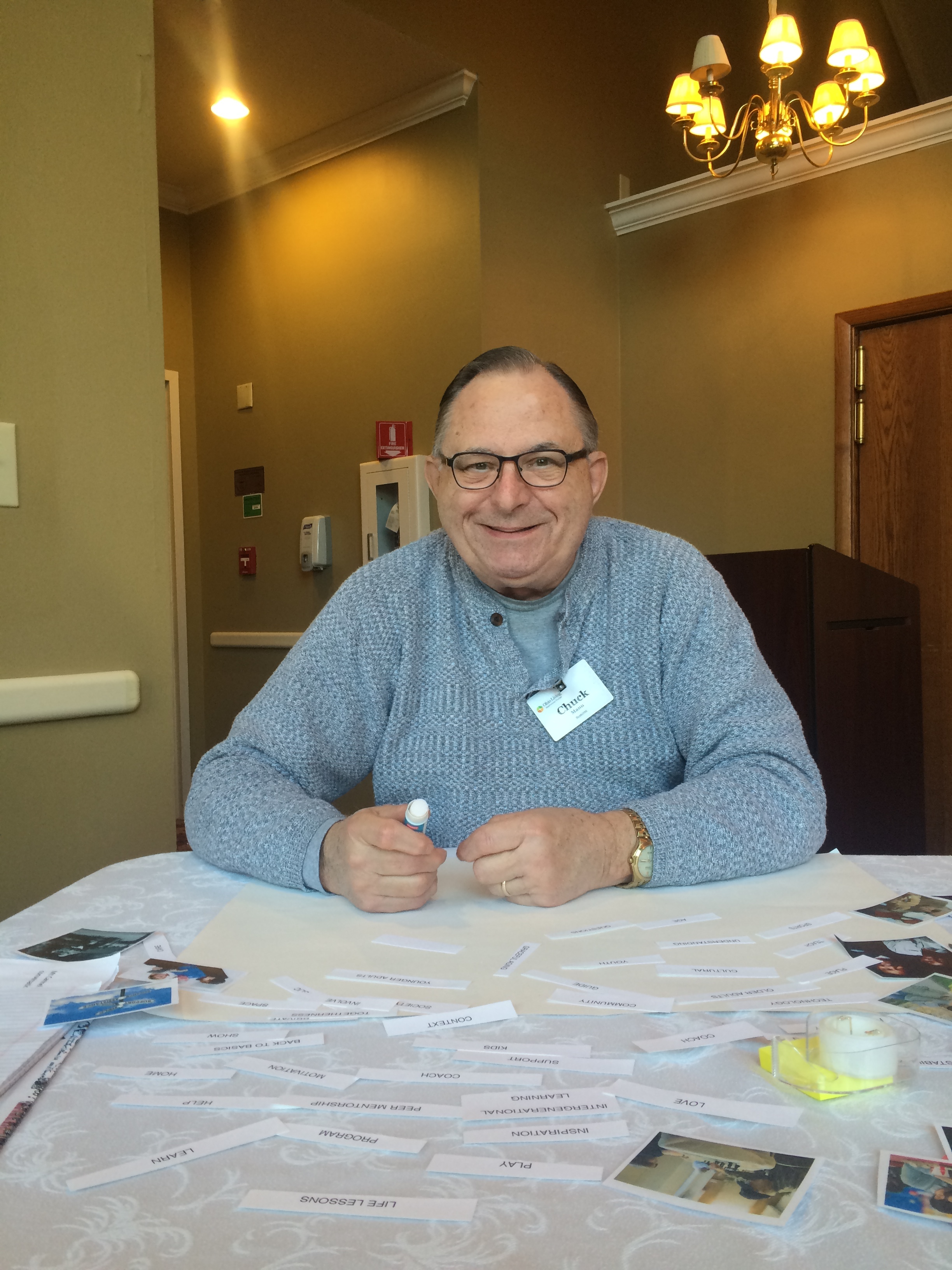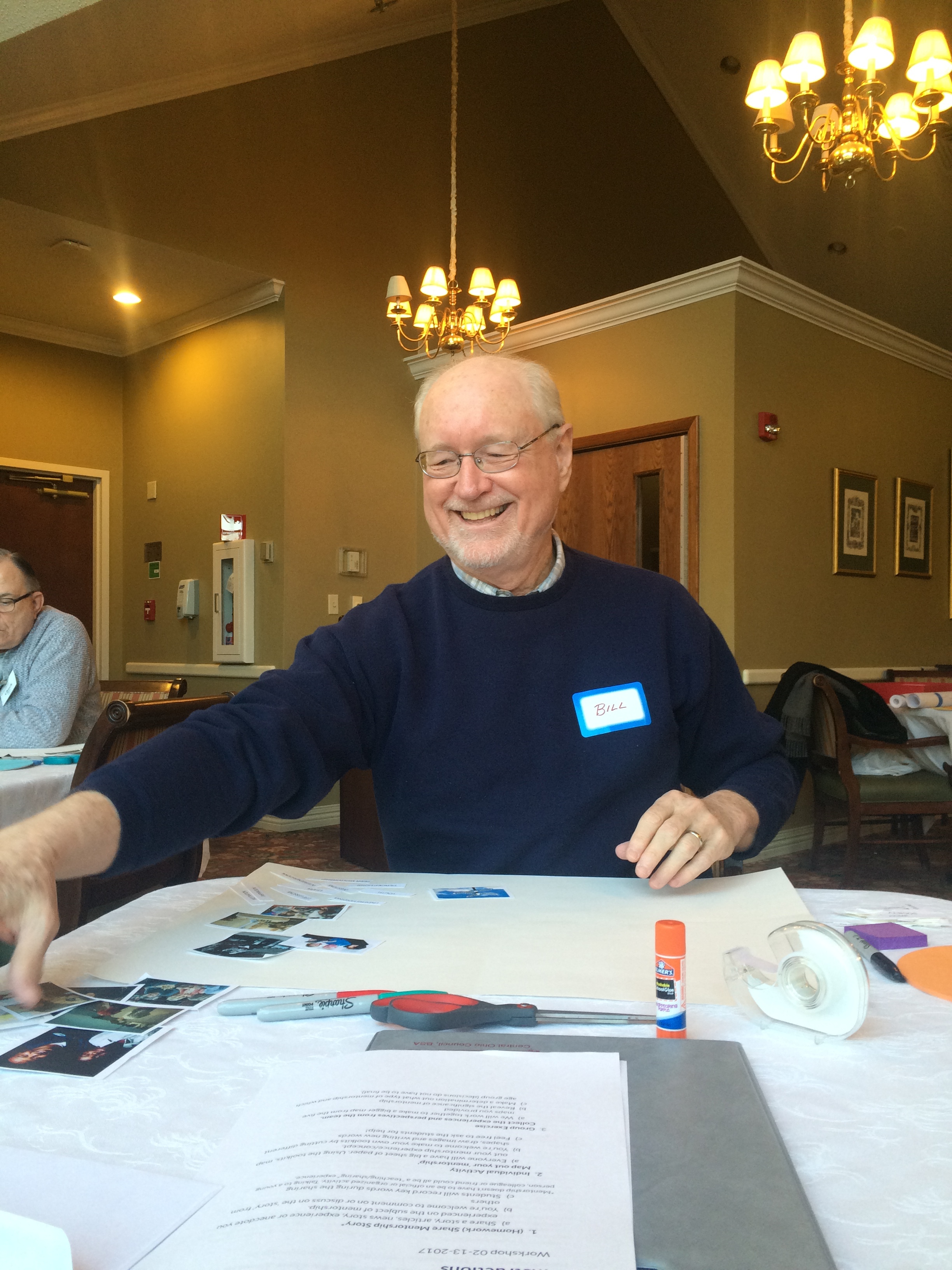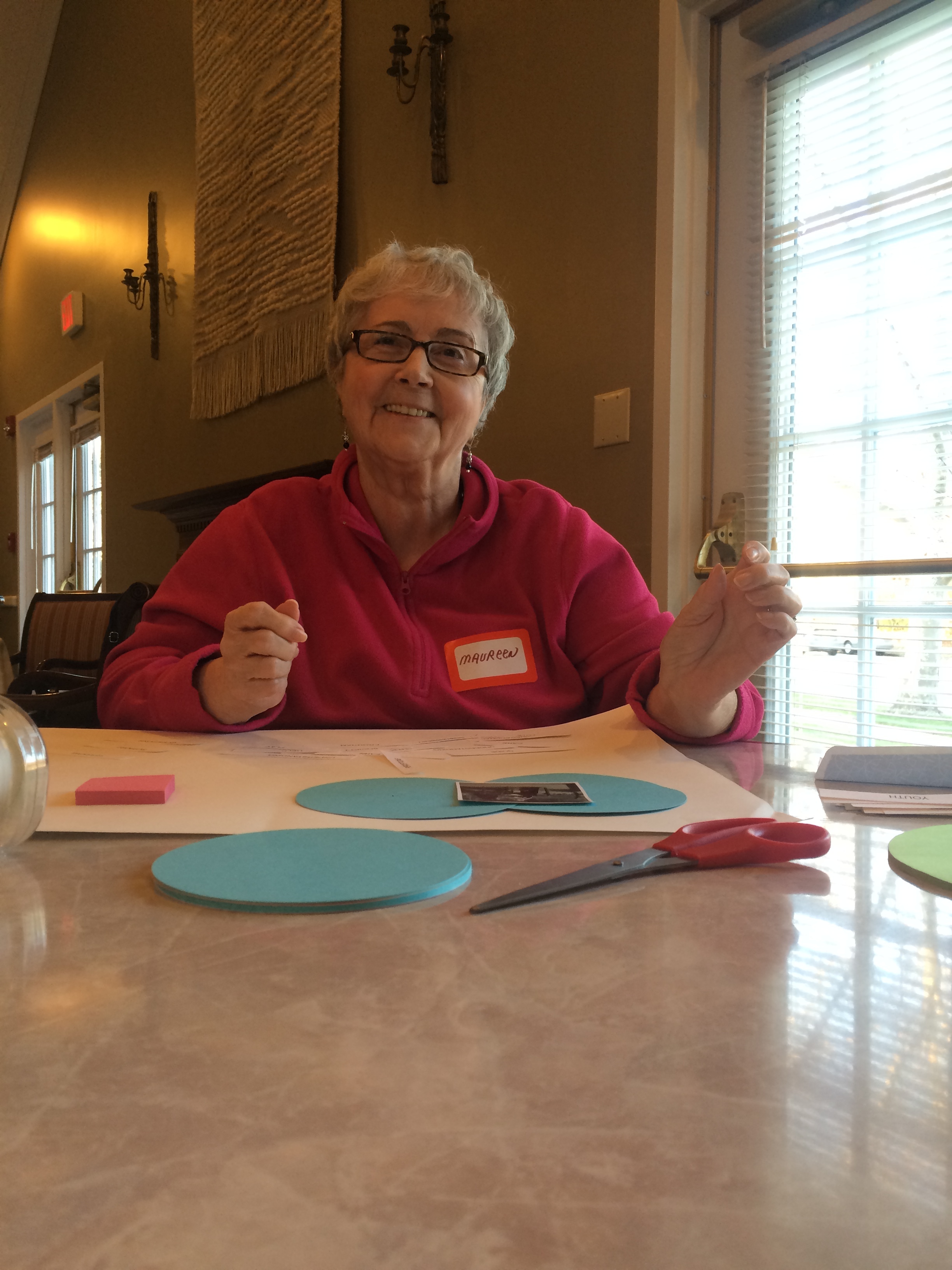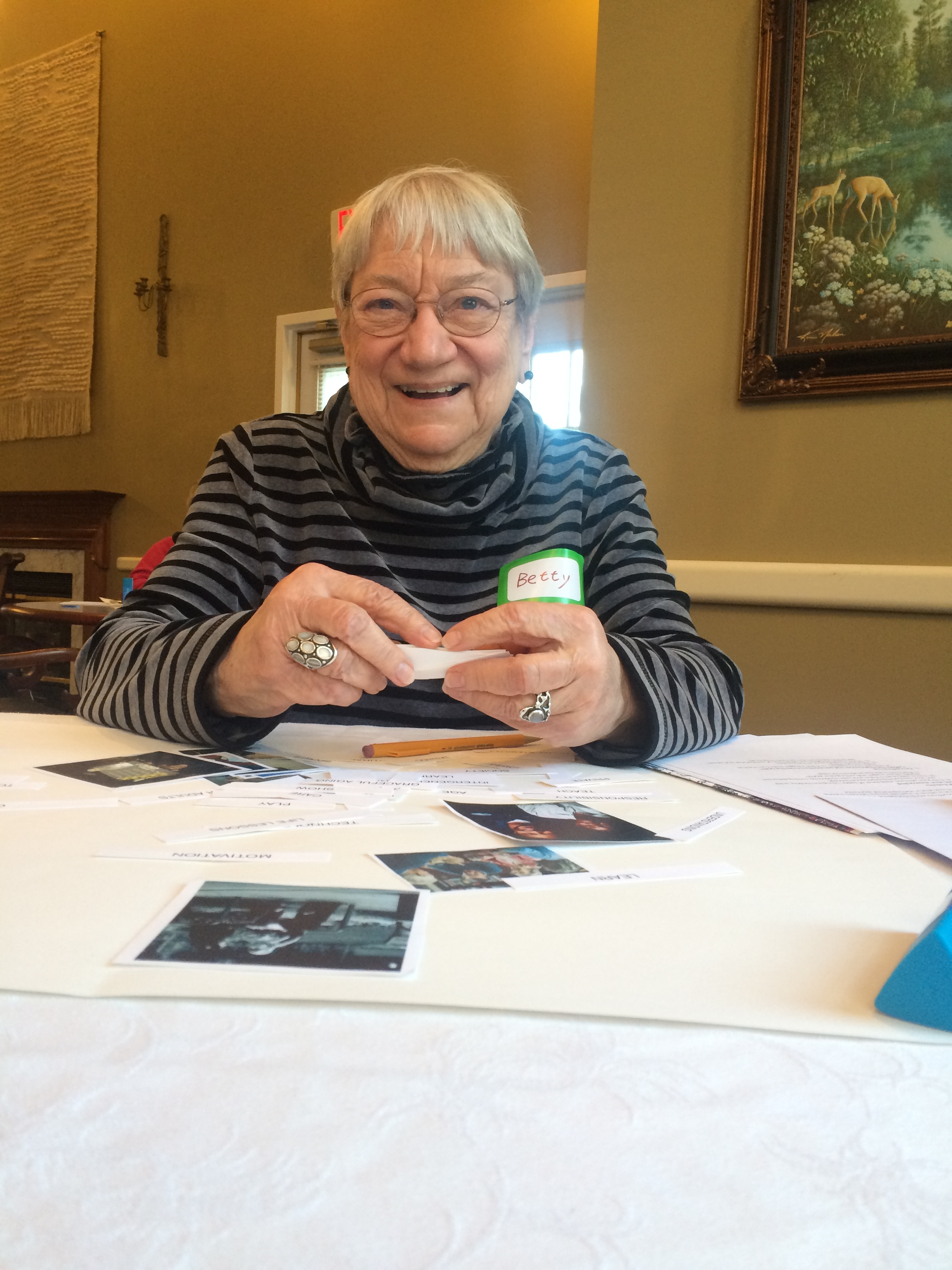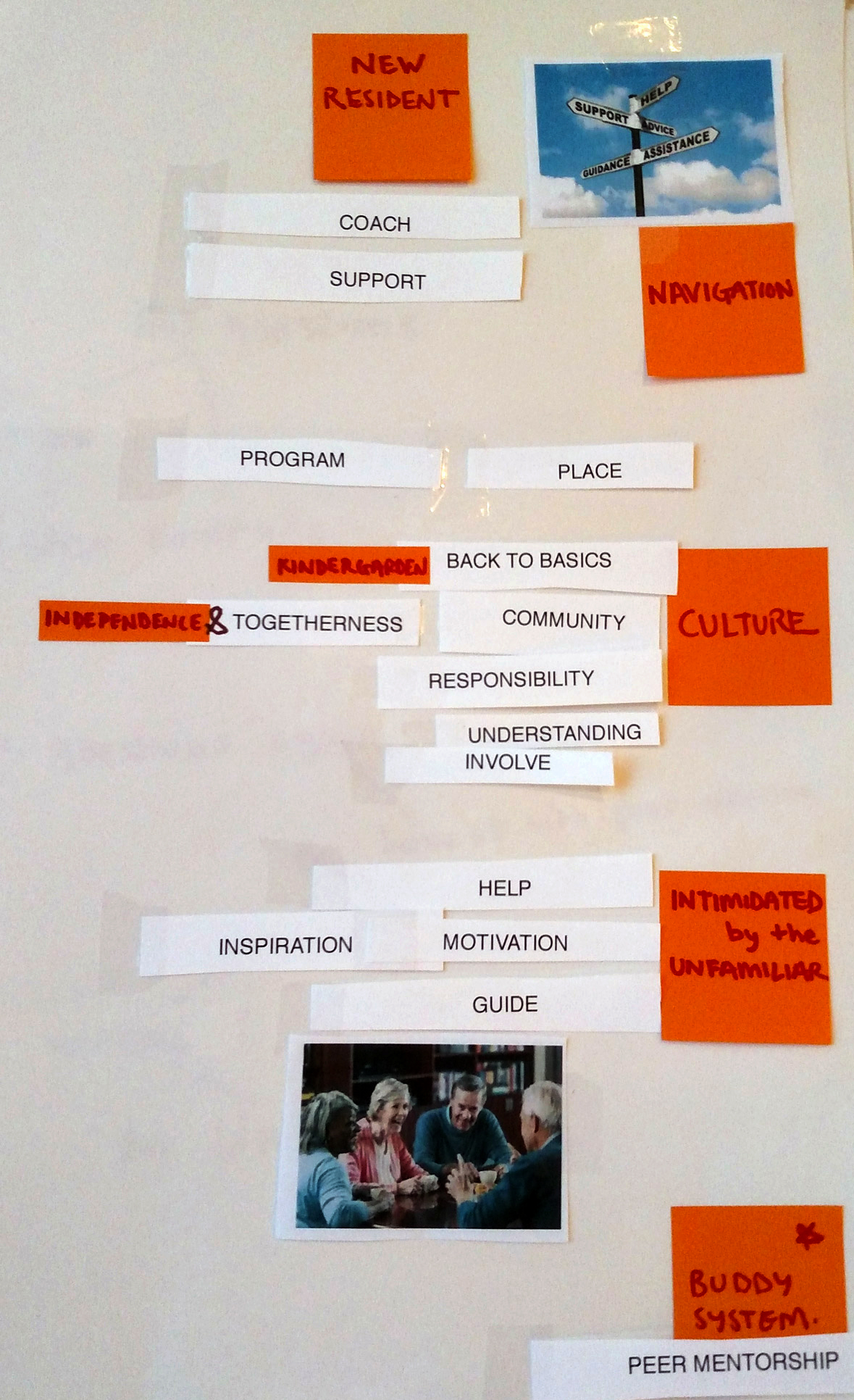FUTURE AGING AND SOCIAL ENGAGEMENT: CO-DESIGNING WITH OLDER ADULTS
The Project
This was an interdisciplinary, collaborative, studio-based co-design studio where graduate students (from different disciplines like Design, Industrial Systems Engineering, MBA, and Psychology) worked together with older adults from the Westminster-Thurber Independent Living community at Columbus, Ohio. We explored and tried to understand what possible new services, processes, or products we could locate and design to improve the quality of life and help older adults remain socially engaged.
In preparation of having to work with older adults, we dove into secondary research on gerontology and geriatrics, and attended lectures from guest speakers like Dr. Cynthia Dougherty (Director, Office of Geriatrics and Inter-professional Aging Studies), Dr. Holly Dabelko-Schoeny (Professor of Social Work), Katie White (Director, Age-Friendly Communities at The Ohio State University College of Social Work), and Dr. Monica Robinson (Occupational Therapy).
Our first couple of meetings with the residents of WMT included exploring the existing systems, programs, and services in use already. From there, we started mapping the gaps and began to break up into smaller groups to explore opportunities and tackle any problems in detail. We met in a large ballroom within the community premises which had the residents at ease.
Mentorship Team
The residents of WMT and the graduate students split into groups and topics that they were most interested in. The team I was part of was addressing the social aspect of moving into an independent living community and how that process could be made easier for incoming residents. Our team consisted of three graduate students and four resident. General objectives of the team after our first discussion include topics like finding purpose after retirement, peer-to-peer mentorship or intergenerational mentorship, perception of aging by older and younger adults, and social participation.
STAGE-1 | ACTIVITY-1 | GROUP DISCUSSION OF MENTORSHIP STORIES
MENTORSHIP STORIES: Priming Activity-1 : The mentorship team older adults were asked to bring their most memorable, personal mentorship stories to share with their peers (with them as mentor or a mentee). We mapped the themes in narrative exchange to understand what worked, what the pain points were, and future possible explorations. This informal chat was to prepare participants for the upcoming activity.
STAGE 1 | ACTIVITY-2 | INDIVIDUAL MAPPING
The co-design members (L to R: CM, BC, MC, and BS) sat at individual tables to carry out a 20-25 minute activity using the contents of the toolkit containing images and words surrounding the ideas of ‘mentorship’, sharpies to draw and write, glue stick, scotch-tape, rectangular and circular sticky notes and a pair of scissors to make one’s own shapes. Each member recorded their version of one significant mentor/mentee experience in their life and illustrate ideas, concepts and meanings surrounding their perception surrounding ‘mentorship’ and aging. We had a group discussion later using these as starting points to explore common themes, working ideas, and pain points that needs to be addressed.

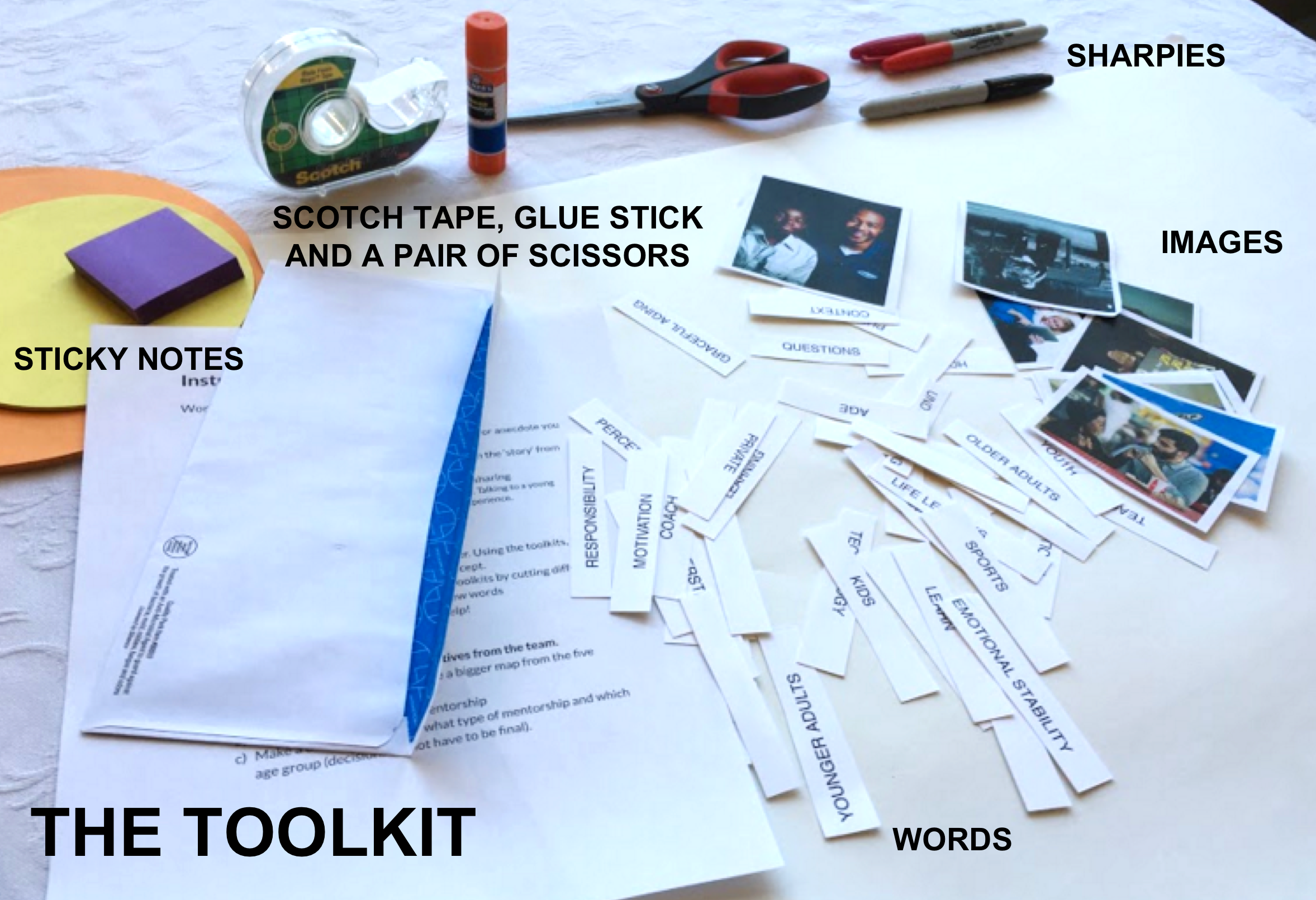
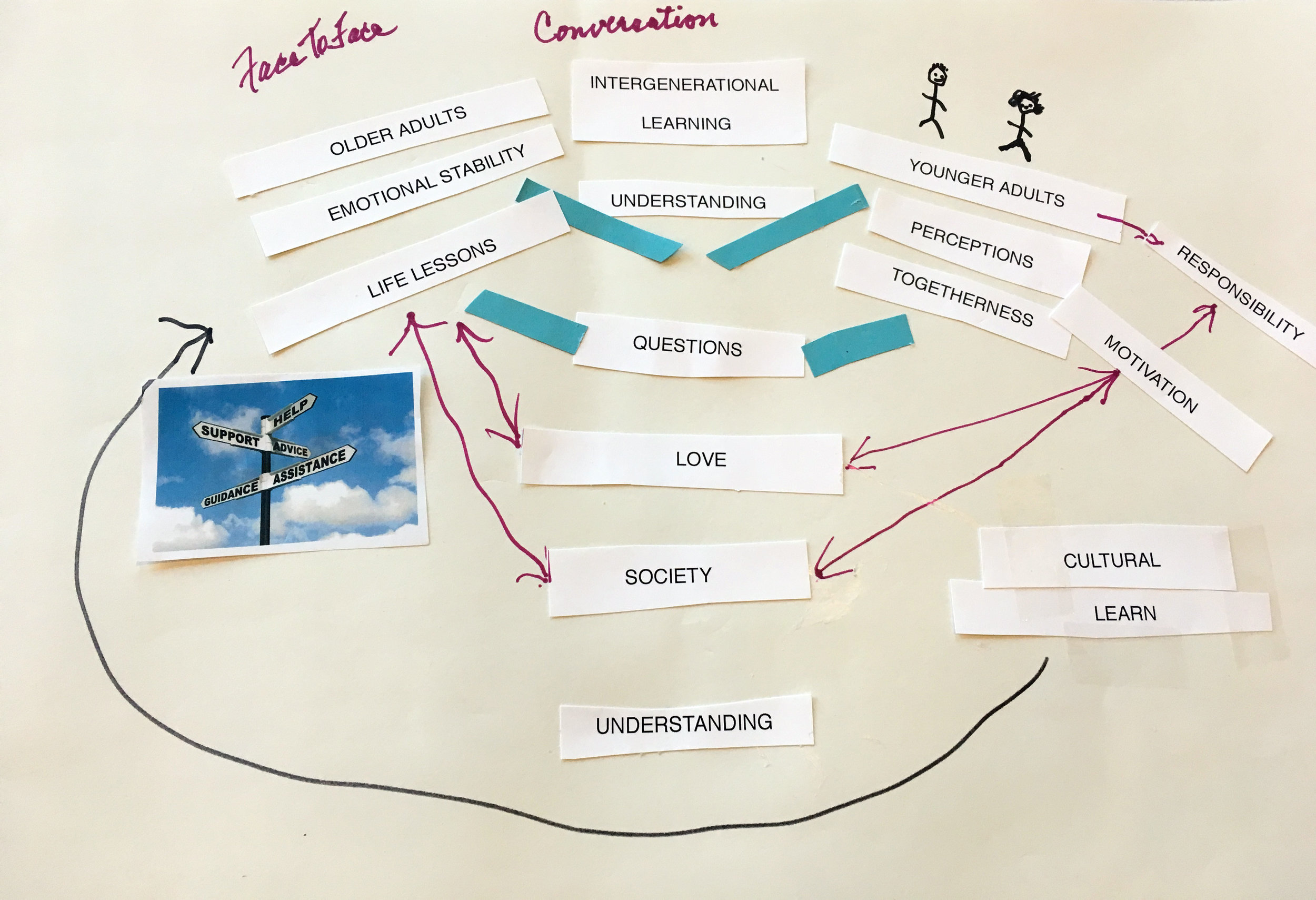

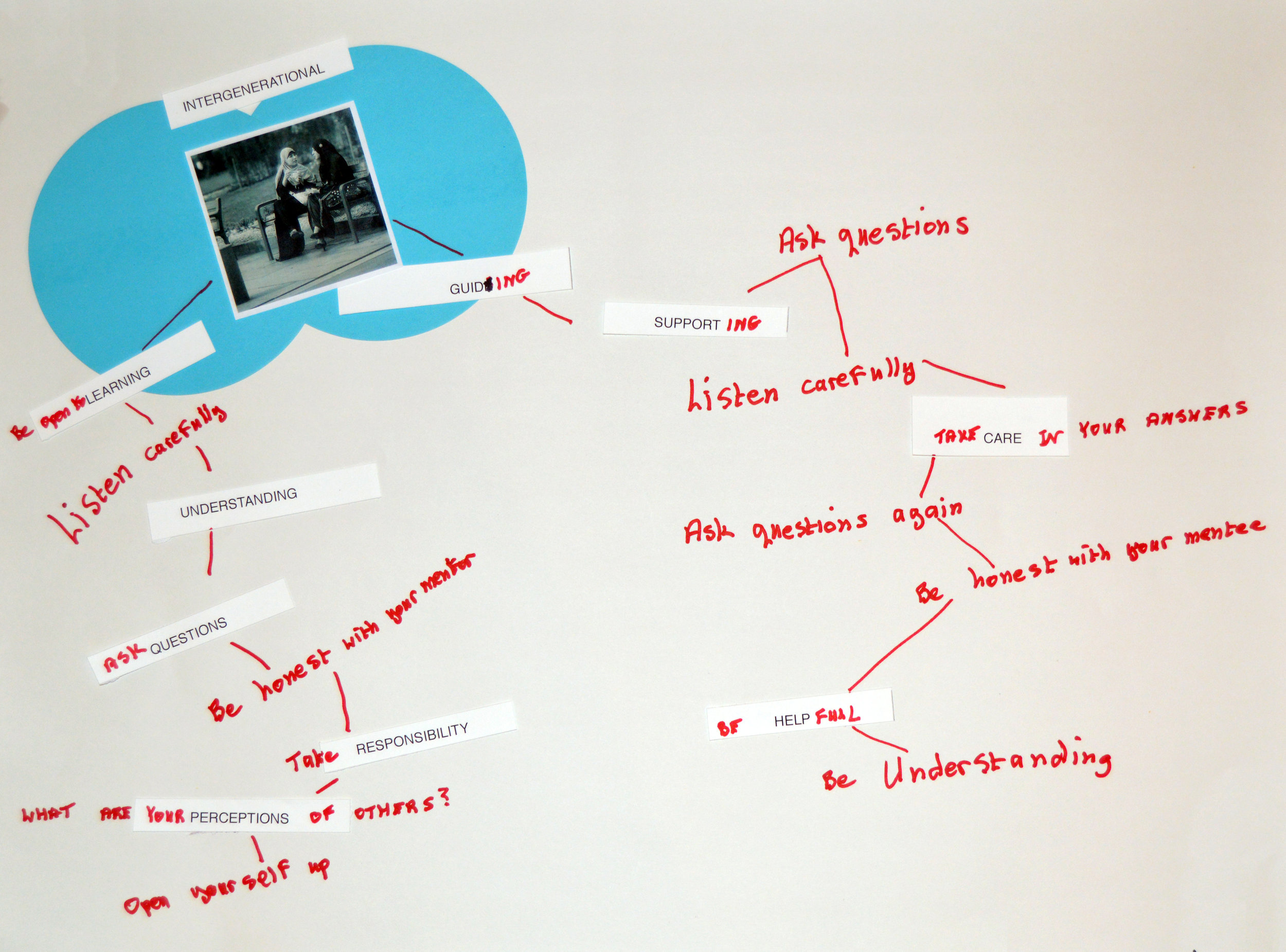
STAGE 2 | ACTIVITY 1 | GROUP MAPPING
We worked together (participants and students) to make a larger map from the four maps created last week, in order to reveal the significance of mentorship and find out opportunities of design. The goal of Stage 2 was to solve conflicts and identify opportunities for design. We collected and compared keywords from previous work.
This mind map shows the timeline of a new resident(s) coming to WMT for the first time. They have most likely moved away from their suburban neighborhoods or even from a different city altogether. Taking this to be the starting point, we explored different problems and opportunity spaces. We strongly moved towards the peer-to-peer mentorship system. Our initial definition of the program was to provide each new resident of Goodale Landing and Thurber Tower with a peer mentor to facilitate an introduction to the Ohio Living community.
THE MENTORSHIP SYSTEM
As an element of the OLWT Administrative office, the “mentor” program will provide each new independent living resident with a peer mentor to facilitate a comfortable engagement with the Ohio Living community.
VISION: We envision an Ohio Living Westminster-Thurber where all new residents feel welcome and included.
MISSION: Downsizing and moving into a new community can be an overwhelming experience. On behalf of the OLWT Administrative office, our volunteer program is all about helping new residents make a happy transition by pairing a current resident (a mentor) with a new resident (a mentee). Keeping with the mission of Ohio Living Westminster-Thurber, we are committed to promoting quality of life and wellness of body, mind and spirit.
STAGE 3 | THE NEW MENTORSHIP SYSTEM TO BE INTRODUCED AT OLWT, A Summary of the Final Designed System
Mentors are chosen and trained to mentor incoming residents to OLWT. It will be organized by the Director of Independent Living (we worked throughout with OLWT stakeholders). The mentorship system has already been introduced at the community and it is turning out to be a huge success and helpful for the new, incoming residents.
An Overview of the Process:
Team formation: 5-8 volunteers
Training of mentors
Peer mentor matching (Director of Independent Living)
4-6 weeks using the steps of information
Mentor meeting/collaboration
Renewal of the service agreement after two years
Key characteristics of the Mentor:
Personable
Flexible
Willing
Knowledgeable
Understanding
Information Activities to Get the New Residents Acquainted with the place
Walking tour of campus using “Passport”
Review the new resident’s “arrival packet”
Explain the “Residents’ Association”
Review the “health and wellness” resources
Dining services
Emergency processes
Transportation and shopping
Spiritual support
Introduction to staff
THE MAP TEAM
I was also a part of a four member 'map team'. (Team members were Jules Lipman, Trisha Shah, Ece Karaca, and Hemalatha Venkataraman). We were responsible for redesigning the existing map of the building complex, and its location in the area as the previous map had a lot going on and was confusing. It had small text that was not the optimum reading font size for older adults, it was cramped, had tilted labels, and had too many extra colors.
The old, existing map of OL Westminster Thurber
We decided to gather the information based on the research from other’s group projects like gathering room details from the team that worked on creating a community 'passport', floor plans from the architects etc. The site plan was digitally traced and reworked. The new, re-designed map had simplified graphics, lesser clutter, enlarged text, straightened colors, and the use of only two colors for avoiding confusion and distraction.
This map is of size 11" x 18" but will be foldable to 3.5 x 3.5" for easy carrying using a special type of folding.
The map team. L to R: Jules, Hemu, Trisha, and Ece
